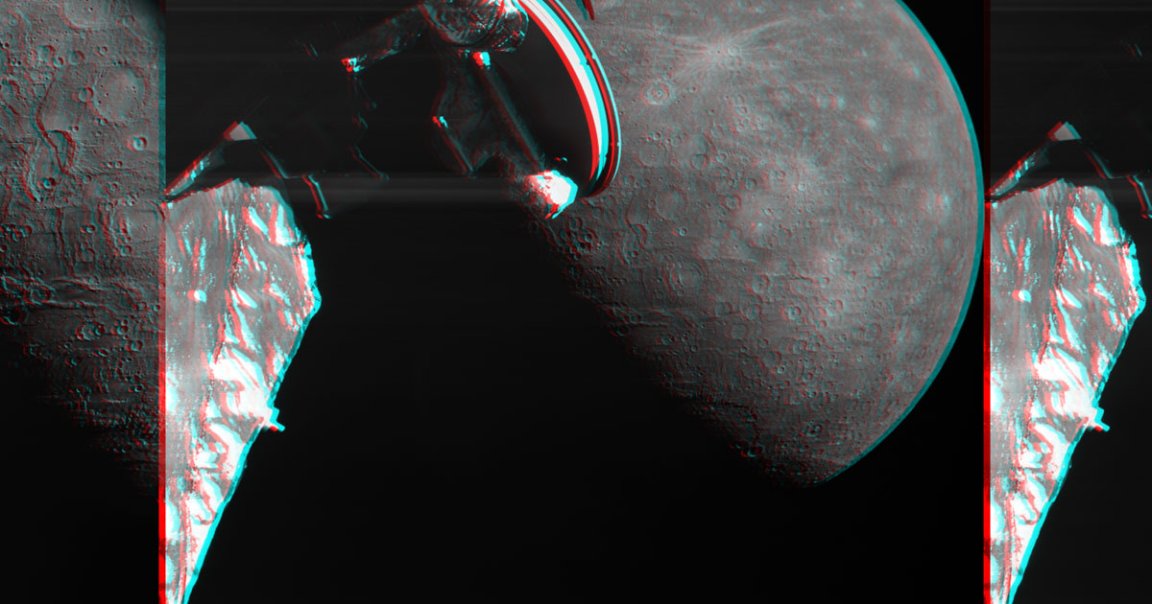
Warts and All
The BepiColombo mission, a joint European-Japanese effort, has recently completed its third of six planned flybys of Mercury, capturing dozens of images in the process.
Three of those images, released by the European Space Agency (ESA) on Monday, show the mission’s probe approaching and leaving the planet, revealing Mercury’s crater-riddled surface in magnificent chiaroscuro.
At its closest, the spacecraft soared within just 150 miles of Mercury. This occurred on the night side of the planet, however, too dark for optimal imaging. Instead, the first and nearest image (seen below) was taken 12 minutes after the closest approach, at the still impressive proximity of some 1,100 miles above the surface.
Name Game
Though illuminating, that first image is mostly overwhelmed by deep shadow, the probe still in the clutches of the planet’s nightside. A follow-up image at the 20-minute mark and 2,100 miles up, though, brings into light more of Mercury’s rough topology.
A marked-up version of the snapshot highlights several notable geographical features, including craters and an escarpment called the Beagle Rupes, a roughly 370-mile-long tectonic stretchmark that formed when the planet cooled and contracted.
At the mission’s outset, BepiColombo scientists were keen on studying a 135-mile wide crater, which could hold secrets to Mercury’s ancient history. One small hiccup? It didn’t have a name yet.
“During our image planning for the flyby we realized this large crater would be in view, but it didn’t yet have a name,” said David Rothery, a planetary geoscientist and a member of the BepiColombo imaging team, in a statement.
It was given the name Manley, after the Jamaican artist Edna Manley, assigned by the International Astronomical Union last week.
“[Manley] will clearly be of interest for BepiColombo scientists in the future because it has excavated dark ‘low reflectance material’ that may be remnants of Mercury’s early carbon-rich crust,” Rothery explained.
Take Four
BepiColumbo will have another flyby on September 5, 2024. Between now and then, the scientists will have their work cut out for them.
Meticulously planning will be needed to execute “thrust arcs,” periods of solar-electric powered propulsion that are crucial for the probe to overcome the Sun’s ginormous gravitational pull.
The pièce de résistance will be delivered in early 2026, when the probe will split into two different orbiters, one belonging to the Japanese Aerospace Exploration Agency.
From there, JAXA’s orbiter will commence its study of Mercury’s magnetic fields, while the ESA orbiter will continue its healthy obsession with the planet’s geography.
More on the cosmos: Scientists Spot Star Fleeing Our Galaxy at Incredible Speed